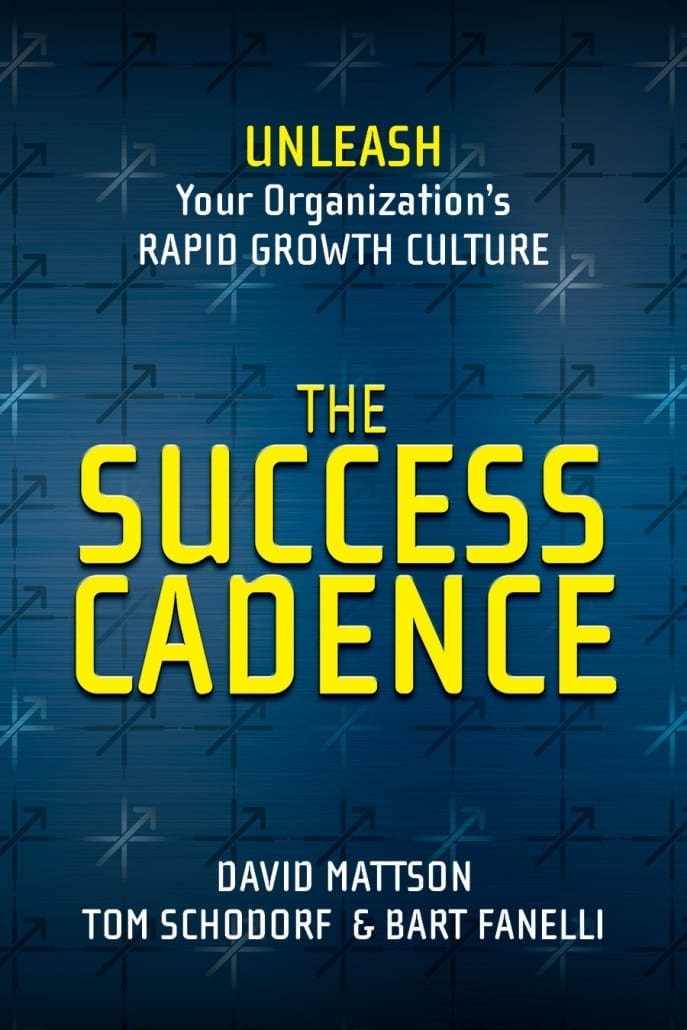The Disconnect that Keeps Your Company from Performing at its Peak

The Disconnect puts the sales team outside of the strategic conversation. Sales are considered an ending point, not a vital resource. Typically, Finance, Marketing, and Operations all have input, direct or indirect, on the creation and revision of the strategic plan. Sales often have no such contribution. The plan, and its revenue targets are dictated to Sales. The salespeople are expected to go out and execute it. There is zero conversation, zero back and forth, zero collaboration. The strategic communication with Sales can be translated roughly but accurately as: “Here’s your quarterly target. Go hit it.”
In early-stage and high growth scenarios, that’s a losing proposition because there’s no buy-in and no intimacy in the field with what the company is genuinely trying to accomplish. That Disconnect leads to a low-growth culture and a failure to execute the strategic plan adequately or effectively. It’s often impossible to recover from such a blow to communication, collaboration, and strategic alignment.
Changing this situation is not a simple fix. It requires the courage to change the operating culture that management has grown used to, and a parallel willingness to make and follow through on decisions that challenge the familiar ways of setting company strategy. Specifically, there has to be a connecting line from the outset between the salespeople and leaders out in the field and the management team setting and funding corporate objectives – without it, slow growth is imminent.
Sales has to be the active, leading partner in the formation of the strategy that the company is trying to pursue. That’s a differentiator that most companies miss. Once you get it right, though, this way of doing business leads to a whole new organizational culture, one based on the full support of the principle of scalable, aggressive growth.
When the field organization, both sales and technical sales have active roles in strategic planning, development of corporate initiatives, and specifically on the setting of their own monthly and quarterly targets, territory plans, etc. the dynamic changes, Everybody’s on the same page; everybody’s taking action to serve the same purposes; everyone is in alignment with senior executives. A remarkable spirit of cohesion emerges when the sales team knows with deep certainty that their fingerprints and contribution are on the company’s objectives, initiatives and revenue targets, Unfortunately, this is the exception, rather than the rule. Usually, what happens is The Disconnect. That’s how companies are used to doing business. But that familiarity carries a steep cost: slow growth, missed targets, attrition, and unfulfilled potential.
The key takeaway for senior leaders here is a simple one. If for some reason you’re not including your sales leaders and front-line salespeople in your strategy discussions, your go-to-market planning sessions, and your discussions about monthly, quarterly, and annual revenue targets, you are missing out on the opportunity to turn your sales team into the battlefield defenders of your strategic vision. Start the conversation today!
About the Author

. Bart is a sales leader, entrepreneur, executive advisor, and platform developer who specializes in team building, sales execution, sales leadership methodologies, and global operational efficiency. He has deep experience in building, leading, and scaling technology teams committed to rapid growth. The hypergrowth of one of the teams he led was the subject of a 2017 article in the Harvard Business Review. He is the recipient of the Technology Services Industry Association’s STAR award for “innovation in expand selling,” and the founder and lead designer of Skillibrium, a powerful sales success execution platform.

 Before opening the doors to your new business, you need to make sure you have a plan of action and a set of goals in place. If you don’t have an end game in mind, you’re going to have a disorganized, chaotic mess of a business.
Before opening the doors to your new business, you need to make sure you have a plan of action and a set of goals in place. If you don’t have an end game in mind, you’re going to have a disorganized, chaotic mess of a business.
 Most modern organizations claim to be strategy-driven. But when you cut through the hyperbole, what do you find?
Most modern organizations claim to be strategy-driven. But when you cut through the hyperbole, what do you find? Graeme Findlay is an Associate Fellow at the University of Oxford Saïd Business School. He consults to industry as an executive coach and change management advisor. Prior to specializing in leadership development, Findlay held executive management roles and was accountable for delivering operational transformations and performance turnarounds on world-scale mega-projects. His passion for high performance teams led to academic research at Oxford University and HEC Paris. Findlay holds a Masters degree in Consulting and Coaching for Change. For more information, please visit
Graeme Findlay is an Associate Fellow at the University of Oxford Saïd Business School. He consults to industry as an executive coach and change management advisor. Prior to specializing in leadership development, Findlay held executive management roles and was accountable for delivering operational transformations and performance turnarounds on world-scale mega-projects. His passion for high performance teams led to academic research at Oxford University and HEC Paris. Findlay holds a Masters degree in Consulting and Coaching for Change. For more information, please visit  It’s not the most exciting part of starting a business. In fact, if you’re like a lot of entrepreneurs, you’re probably going to find yourself pulling a few all-nighters to get one done before heading into your first pitch for funding. Because that’s the thing – your business plan is important.
It’s not the most exciting part of starting a business. In fact, if you’re like a lot of entrepreneurs, you’re probably going to find yourself pulling a few all-nighters to get one done before heading into your first pitch for funding. Because that’s the thing – your business plan is important.